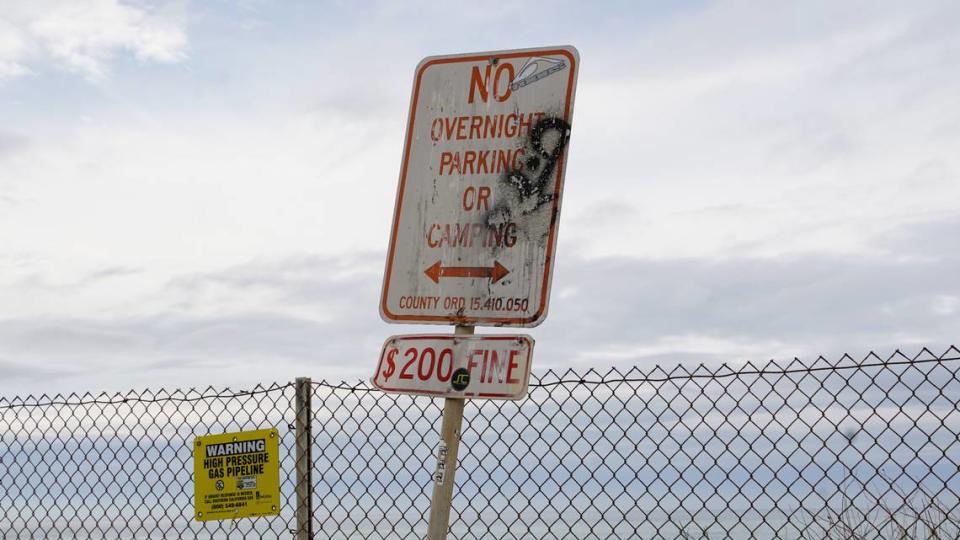With few spaces to park, SLO County residents living in RVs scramble to find places to stay
Support SLO County Housing Reporting
→ Support reporter John Lynch’s coverage of housing and homelessness in SLO County by donating to The Tribune’s Local Impact Journalism Fund. Go to sanluisobispo.com/donate.
When Carol Ellis was kicked out of her Morro Bay apartment in late 2022, she knew she was running out of options.
After being evicted twice in the past five years, Ellis moved into a 22-foot, 25-year-old recreational vehicle in November 2022 and took up working as a camp host at Gaviota State Park to keep her rent low, assuming that living in mobile home parks and campgrounds would be a cheaper alternative to a traditional rental.
“At that point when I got that last eviction, I couldn’t find any place affordable for me to live,” Ellis said.
For a very brief time, that camp setup worked, but while she was visiting family for Christmas that year winter storms rolled through San Luis Obispo County, ruining her RV and razing her campsite to the ground.
She then spent January, February and March 2023 living and parking her RV on the streets of San Luis Obispo County, taking on another camp hosting job through the summer.
“It’s not that easy to get a spot,” Ellis said. “You’re always planning your next spot — most of the posts were three to six months, so you’re putting in for a whole year ahead, and pretty much all the parks I talk to are full until next fall.”
Near the end of October, she moved to Morro Bay at the urging of her family, who encouraged her to find a spot in the Silver City Resort and RV park.
Ellis, 65, settled into the park, trading in her RV for a larger, newer 30-foot trailer that she had moved to the campground, expecting to live there for the foreseeable future.
The unit cost much of her savings, but was supposed to provide a long-term, less expensive form of housing, she said.
Then in December, she received the news: She’d have to leave within a month.
“I’m walking my dog past the office, and (the manager) just comes out and says, ‘Hey, I have bad news. The owner told me that he’s not renewing your lease and you have 30 days to leave,’ and he handed me the no-fault non-renewal,” Ellis told The Tribune soon after. “It was like someone punched me in the chest.”
With mobile home parks full to bursting and cities across San Luis Obispo County implementing new parking and camping ordinances that restrict the places where people can stay overnight in vehicles, people in Ellis’ situation are feeling the squeeze.
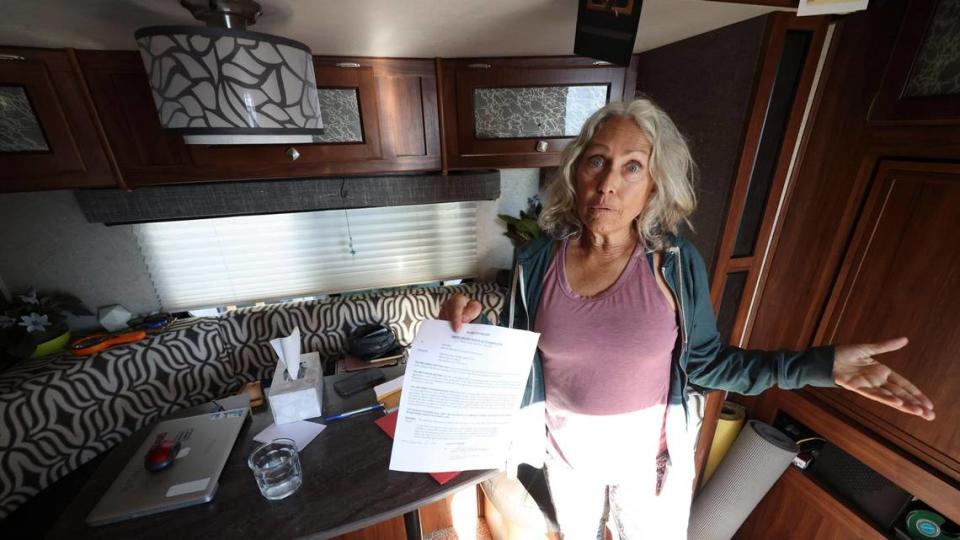
Mobile home parks serving fewer low-income residents
Linda Winters, a longtime mobile home resident of Silver City West — the neighboring mobile home park owned by the same company as Silver City Resort — said Ellis isn’t the only person struggling to find a home for their RVs and trailers.
Winters advocates for the rights of mobile home park residents in the city, and has been involved in litigation against the park’s landlord related to eviction proceedings.
Winters said since the COVID-19 pandemic and the subsequent housing frenzy in San Luis Obispo County, many mobile home parks are filling up with higher-paid remote workers who relocated and downsized thanks to the allure of the Central Coast.
According to the U.S. Census Bureau’s most recent data on the value of manufactured homes in the western region of the United States, the average sales price of a one-bedroom manufactured home was $94,400 in August 2023, while a double averaged $163,300.
As recently as August 2019, one-bedroom manufactured homes averaged almost half that, at $48,200 in the western U.S. and doubles averaged $120,700, census data showed.
Those recent hikes in the average price of a mobile home even outpaced the price of new single-family homes between 2017 and 2023, an analysis of U.S. Department of Housing and Urban Development and Census Bureau data by online loan platform LendingTree found.
Because mobile homes are more valuable than ever, it’s driven up the value of plots of land in mobile home parks and has provided park owners with more incentive to upgrade their parks and get the most value possible, Winters said.
That leaves residents of some parks at a high risk for removal, as Ellis and many other residents — who tend to be older working people and retirees — are on fixed incomes, Winters said.
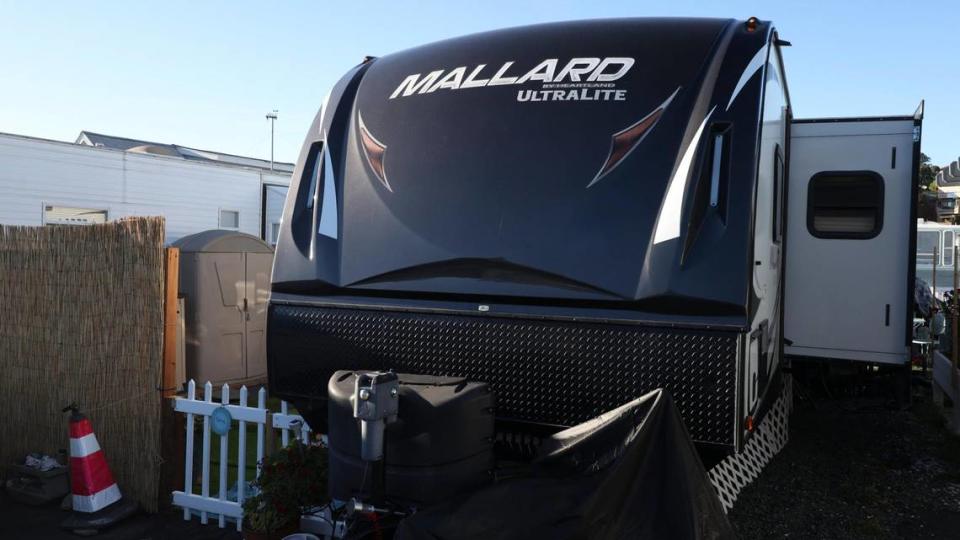
Because Ellis had lived at Silver City for less than 270 days, she didn’t count as a permanent resident, which exposed her to more risk of eviction or non-renewal of a lease, Winters said.
“If you’re not permanent ... they can come in at any given time and say, ‘We would like you to leave,’ and they can give you a no-cause eviction notice,” Winters said. “They basically don’t have to have any reason at all.”
Angus Keith, the owner of Silver City West and Silver City Resort, told The Tribune the park is within its legal rights to remove short-term tenants, regardless of the reason.
Ellis said her pair of evictions — even if they are no-fault evictions — and a non-renewal of her most recent lease are a “black scar” on future housing applications she’ll pursue, and “threw her into a spiral” when she realized she may end up homeless again.
As such, Ellis said she considers herself extremely lucky to have found a place to park her trailer, landing a rental RV space on a property near Avila Ranch within her price range with just two weeks to spare on her Silver City Resort lease.
Had it not been for her new home near Avila Ranch, Ellis said she didn’t know how she would have kept her trailer mobile because her car can’t tow the trailer.
Though it’s far from any neighbors and is a considerable drive from Morro Bay — the place she considers home — it’s better than the uncertainty many people who live in their vehicles face each night, Ellis said.
“‘I’m too old to be like scrambling and trying to find a place to lay my head,” Ellis said. “For God’s sake, these should be the golden years where you’re relaxing and enjoying yourself.”
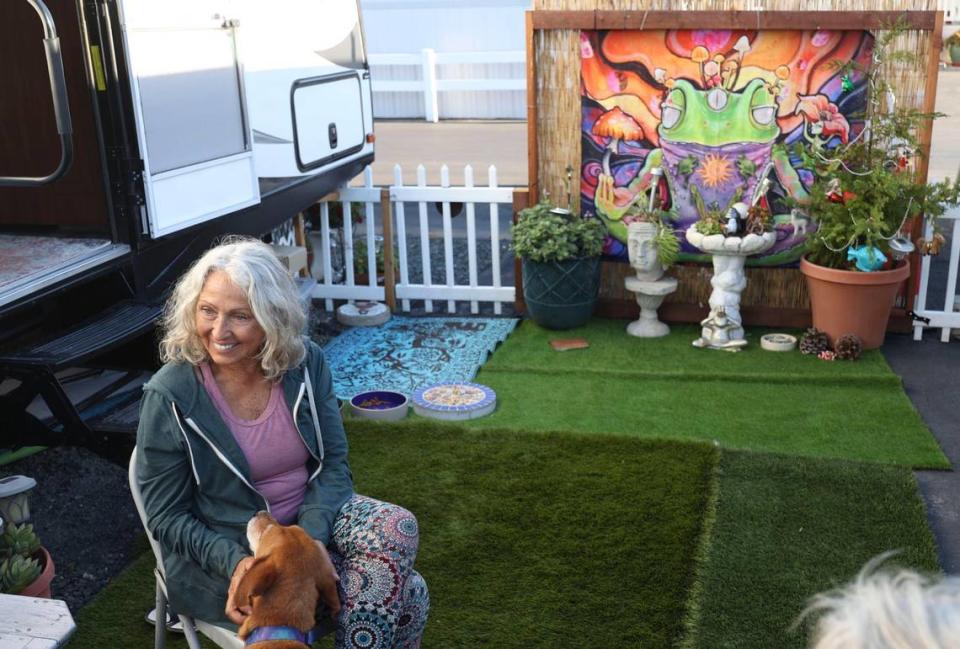
SLO County cities tighten parking rules
According to San Luis Obispo County’s 2022 Point-In-Time Count, around 26% of homeless individuals counted in the county the night of Feb. 22, 2022 — or 370 people — were living in their vehicles, with 13% of homeless residents living in RVs, 9% in vans and 4% in cars.
Vehicular homelessness was the second-most common type of shelter tracked by the 2022 count — second only to the 41% of homeless residents who said they lived in tents — and more than the population staying in emergency and transitional shelters.
Since the 2022 count, vehicular homelessness has risen in many San Luis Obispo County cities, leading municipalities to roll out parking ordinances that make living overnight in a vehicle a more challenging proposition.
Most ordinances introduced by San Luis Obispo County cities in recent years bar RV vehicular living and camping for more than a day or two within set distances of other camps — with the aim of preventing encampments from forming — and places such as residential areas, schools, playgrounds, commercial areas, fire zones and parts of public and private property.
In the past year, Morro Bay, Grover Beach and Atascadero all introduced new or strengthened existing camping and parking ordinances, while Paso Robles has restricted RV camping on most streets since 2016.
Arroyo Grande also explored introducing a new parking ordinance last year, but did not move forward with it.
San Luis Obispo County’s land is governed by the Rural Recreation and Camping Ordinance, which makes a few exceptions, but generally prohibits RV camping on most county roads for extended periods of time.
Under the county’s ordinance, overnight camping and sleeping in vehicles is prohibited in unincorporated towns such as Avila Beach, Oceano, Los Osos and Cayucos, along with county roads such as Lone Pine Road and Prefumo Canyon Road.
While ordinances have created more restrictions on where parking is allowed, the few places where people living in their vehicles could legally stay such as the Oklahoma Avenue Safe Parking site — which initially opened to accommodate people who were living in vehicles on Palisades Avenue in Los Osos — have started ramping down operations in the last year.
More recently, a proposed replacement for the Community Action Partnership of San Luis Obispo’s Railroad Square Safe Parking program that provided a spot for around two dozen parkers in San Luis Obispo stalled out without a replacement program.
That leaves the dozen vehicle spaces at 40 Prado Homeless Services Center as the only place that provide dedicated safe parking spots, homeless services director Jack Lahey told The Tribune in an email.
Lahey said the Prado safe parking program provides 90-day enrollments in CAPSLO’s case management services, with the goal of moving participants toward a housing outcome.
With only a dozen spots available, demand has risen in recent years, he said. Currently, 44 people are on 40 Prado’s referral list to reserve a parking spot.
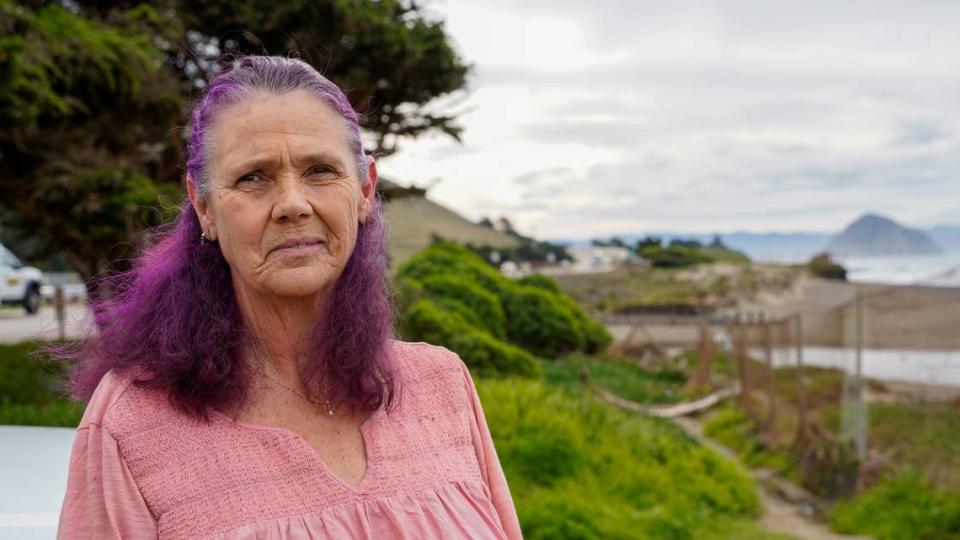
Vehicular homelessness on the rise
Former Oklahoma Avenue Safe Parking site resident Deana Clarke said she and her two dogs are facing the uncertainty caused by more restrictive parking ordinances and fewer legal places to sleep each night.
Clarke was told to leave the parking site in August by the county, and now moves from spot to spot around San Luis Obispo County in her 42-year-old recreational vehicle, often joined by a pair of other former Oklahoma Avenue residents and their vehicles.
From the shoulders of Highway 1 along the North Coast to the parking space in front of her daughter’s Morro Bay home, Clarke has stayed mobile to keep from getting ticketed.
Over the past four months, Clarke hasn’t stayed in the same place for more than two to three nights in a row, never exceeding the limit introduced by local ordinances, she said.
“We’re hoping we’ll be here maybe just one more night,” Clarke told The Tribune while staying on a shoulder of Highway 1 near Morro Bay in January. “There were no campsites available for the three of us, and we try to stay together because some of us are single, and it’s a lot.”
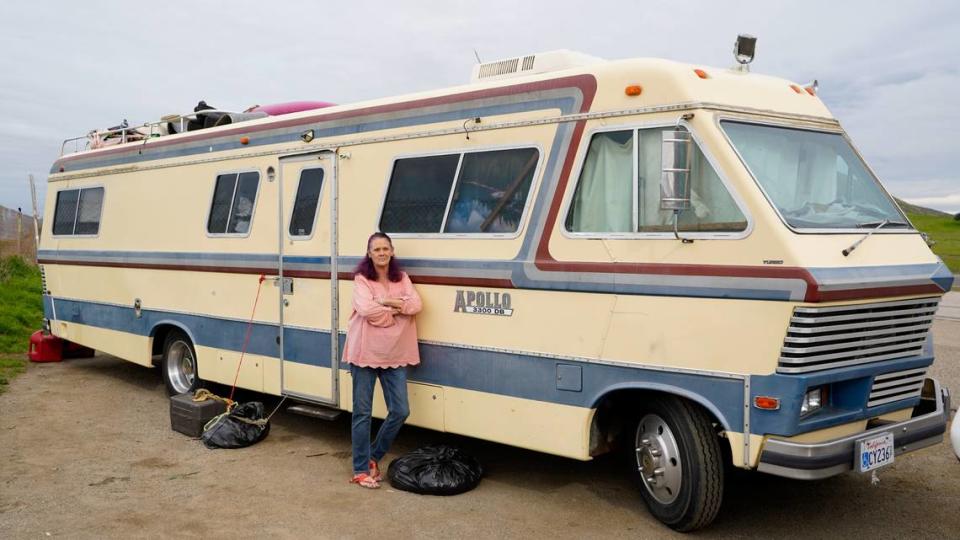
Clarke said she received disability benefits since 2013 due to a collision with a drunk driver, but it’s not enough to afford a rental in San Luis Obispo County.
In addition to being on a fixed income, Clarke said her pets and four-decade-old recreational vehicle have taken her out of the running for many prospective rental arrangements and mobile home parks, which often have pet restrictions and require RVs manufactured within the past 10 to 15 years.
Staying at a campground is too expensive each night and means living far from amenities, while most rental RV spaces in San Luis Obispo County are simply too expensive for many low or fixed-income vehicle owners who previously would have been able to get by in a mobile home park, Clarke said.
After spending several years in the RV, she said she’s hesitant to leave it behind for any reason in the event she becomes homeless again.
“I’m not selling my RV — first of all, it’s a vintage RV, it’s paid for and it’s mine,” Clarke said. “It has always kept a roof over my head. Always.”
Unwilling to leave San Luis Obispo County behind, Clarke said this will likely be her status quo for the foreseeable future.
“It shouldn’t be against the law to sleep in your vehicle,” Clarke said. “We’re not bothering anybody, we’re not hurting anybody. We’re just trying to keep our head above water”
